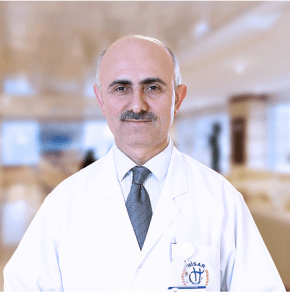Tarsorrhaphy
Tarsorrhaphy is a medical (surgical) procedure where the upper and the lower eyelid margins are actually fused together. It is the few of the most effective as well as safest procedures in order to heal difficult-to-treat corneal lesions. The surgical procedure is one of the most commonly performed treatments in order to protect the cornea from exposure which is caused by inadequate eyelid coverage. The procedure can also be used in order to aid in the healing process of indolent corneal ulceration. Usually tarsorrhaphies can be temporary or sometimes permanent. In the latter case, however, raw tarsal edges are created in order to form a lasting adhesion. Medial Tarsorrhaphy can be used in order to promote epithelial healing especially in instances like postoperatively following penetrating keratoplasty (PK) or neurotrophic epithelial defects or chemical burns or Bells palsy. Read More
Top Doctors For Tarsorrhaphy Treatments
Top Hospitals For Tarsorrhaphy Treatments
Tarsorrhaphy
Blepharo Definition – what is blepharorrhaphy?
Blepharo in medical terms is nothing but eyelid or eyelids. Blepharorrhaphy is the surgical repair of the eyelid. Blepharorrhaphy is otherwise called tarsorrhaphy.
What are the indications for tarsorrhaphy?
In order to protect the cornea in the case such as inadequate eyelid closure. For example, due to facial nerve palsy or scarring (cicatricial) damage to the eyelids of the person caused by a chemical or burns injury. The indications usually include:
- A neuropathic or anaesthetic cornea or half closed eyelids which is at risk of damage or infection
- A proptosis which is the marked protrusion of the eye which is causing a risk of corneal exposure
- Poor or infrequent blinking (For example: a situation happening in patients in intensive care unit or with severe brain injuries)
In order to promote the healing of the cornea, say in patients with:
- Infected corneal ulcer that is taking a very long time to heal
- Non-healing epithelial abrasions
Some of the other indications include:
- To prevent chemosis or conjunctival swelling and also exposure after ocular surgery
- To retain a conformer. For example, anophthalmia children or adults after evisceration or enucleation
What is lateral tarsorrhaphy?
Lateral tarsorrhaphy usually attempts to offset the upper lid retraction along with the lower lid laxity. The procedure involves cornea stitches or suturing the free outer edge of the upper as well as the lower eyelids together. After division of the eyelid anterior into the gray line, the mucocutaneous border of the eyelid margin is then excised.
Types of Tarsorrhaphy:
The main technique for joining both the eyelids is usually split into two types:
- Short-term or temporary tarsorrhaphy
- Long-term or permanent tarsorrhaphy
- Botulinum toxin tarsorrhaphy
In the first two types, the procedure always involves using a suture in order to join the lids. However, in botulinum toxin tarsorrhaphy, the upper lid levator muscle is usually paralyzed with the toxin. Or they may use cyanoacrylate glue in order to join the lids and place a weight (which is usually gold) mainly in suturing of eyelids.
Tarsorrhaphy Treatment:
There are actually two normal and simple procedures of tarsorrhaphy:
- A temporary central tarsorrhaphy that is along with a drawstring. It allows it to be repeatedly opened as well as closed in order to examine the eye
- A permanent lateral tarsorrhaphy leaving the central lids open. It allows the patient in order to see and also the eye to be examined
The treatment procedures for tarsorrhaphy are as follows:
Prior to the treatment:
- A proper health checkup of the patient is carried out before the surgical treatment procedure
- Post the overall checkup, doctor decides on the type of treatment or tarsorrhaphy type to be performed
During the Treatment:
For the drawstring central or temporary tarsorrhaphy suture method (suturing procedure note):
- Doctors usually anaesthetise the central area of the upper and also the lower eyelids. They do this with an injection of a few mm of local anaesthetic.
- The area is then cleaned with 5% povidone iodine. Iodine is left there for a few minutes. During this time, doctors prepare two x 2cm bolsters as well as one x 1cm bolster.
- The sutures are then tied over the bolster (For example, the plastic tubing or else the small cotton wool balls) are placed in order to prevent cutting into skin
- Your surgeon then will pass a double-armed non-absorbable suture for stitching eyes (For example, silk, or prolene or nylon straight through either one of the 2cm bolsters or 2 mm from the end.
- The same needle is then passed onto the grey line that is the lower lid. It is into the tarsal plate and also out of the skin which is of 2–3 mm that is below the lower eyelid margin
- Your doctor then will pass the other needle of the suture right through the upper bolster – or the upper lid. Or the lower lid is also called a lower bolster in the same way as the first needle (2mm from the other end of each side of the bolsters
- In order to separate the closed eyelid, your doctor will pull the smaller bolster down so that the lids will easily open
The treatment procedure of permanent lateral tarsorrhaphy are as follows:
- Both the lids of the eye are given anaesthesia
- Your doctor then will split the anterior as well as the posterior lamellae by using the number 11 blade if it’s available
- Posterior lamella is then excised by 1mm
- Posterior as well as the anterior lamella is then closed by your doctor
Prognosis and Post-Treatment:
- Tarsorrhaphies usually last forever. Yet if the lids need to be divided then it can be done by injecting local anaesthetic as well as cutting the sutures.
- Post-treatment, the surgical procedure will give enough protection to the cornea that is in the open area in order to prevent from paralysis of the iris
Symptoms
NA
Causes
NA
FAQ
1. Why do they tape eyes shut during surgery?
In order to keep your eye most and prevent it from dryness, small pieces of sticking tape are actually used. It keeps the eyelids fully closed especially during a general anaesthetic thus protecting the cornea.
2. What do I have pain when blinking in the corner of my eye?
Few of the common causes usually include dry eyes, a stye or due to pink eye also called conjunctivitis.
3. What is the best eye drops for bell's palsy?
Artificial tear eye drops can usually be used as often as every hour (during the day to in order to keep the eye moist).
4. How long do you keep your eyes shut after putting in glaucoma drops?
Two minutes is usually the duration to keep your eyes shut after instilling the glaucoma drops. Since blinking can usually activate the pump which can drain away your tears from your eyeball.
5. What is paralysis of the eyelid medical term?
Ophthalmoplegia which is also called as extraocular muscle palsy or called paralysis of the eyelid is the medical term.
6. Why does my corneal abrasion still hurts months later?
Injury to the cornea usually from your fingernail can cause corneal abrasion can make you feel hurt months later









































































































